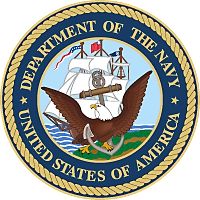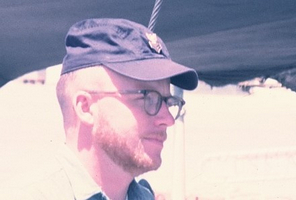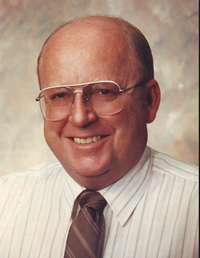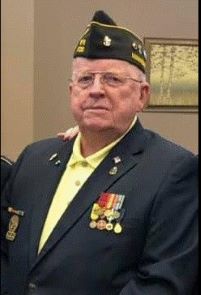
- Name: Bruce Alan Aiton
- Location of Birth: Grand Rapids, Minnesota
- Date of Birth: July 29, 1938
- Date of Death: October 18, 2021 (83 years old)
- Parents: Gerald C. Aiton and Catherine (Bjork) Aiton
- High School and Class: 1956 - Grand Rapids High School, Grand Rapids, Minnesota
- College:
- Highest Rank: Chief Hospital Corpsman (E-7)
- Branch: Navy
- Other Branch:
- Date Sworn In: August 10, 1955
- Place Sworn In: Minneapolis, Minnesota
- Date of Discharge: August 24, 1974
- Place of Discharge: Great Lakes, Illinois
-
Units and Locations:
Start Date End Date Unit(s) and Location(s) Served August, 1955 May, 1956 Boot Camp & HM "A" School, Great Lakes Naval Training Center May, 1956 April, 1957 Naval Hospital, Great Lakes, Clinical OJT May, 1957 November, 1957 Naval Hospital, San Diego, Operating Tech School December, 1957 August, 1958 Naval Hospital, Corpus Christi, Texas, OR Staff September, 1958 July, 1961 2nd Marine Division, Camp Lejeune, NC August, 1961 April, 1964 Naval Hospital, Bethesda, Maryland, OR Staff & Master at Arms May, 1964 November, 1964 Naval Hospital San Diego, HM "B", Independent Duty School November, 1964 November, 1965 9th Marine Expeditionary Brigade, Okinawa & Vietnam December, 1965 July, 1967 USS Abnaki ATF-96 at Pearl Harbor, Deployed Mar/Nov, 1966 July, 1967 July, 1970 Inspector Instructor Staff, 4th Marine Division, Washington, D.C. July, 1970 April, 1973 USS Badger DE1071 at Long Beach, Deployed Mar/Oct, 1973 April, 1973 August, 1974 Navy and Marne Corps Reserve Training Center, Waterloo, IA August, 1974 March, 1985 Fleet Reserve. Retired March 1, 1985 - Military Awards:
Combat Action Ribbon
Presidential Unit Citation (2)
Navy Unit Commendation (FMF)
Good Conduct (4)
National Defense Medal
Armed Forces Expeditionary Medal (2) (FMF)
Vietnam Service Medal (4) (FMF)
Republic of Vietnam Gallantry Cross
Republic of Vietnam Campaign Medal
Rifle Marksman - Military Highlights:
Like so many young men of the 50's, I idolized the veterans of World War II and Korea and couldn't wait to get in uniform so at the wise age of 17 years and 12 days, I was sworn into the United States Navy, a decision I will never regret. After boot camp, I attended Hospital Corps School, which was more difficult than high school, but I did well. I did a lot of independent study in my spare time and submitted my school records to Grand Rapids High School and received a diploma about the same time as my peers, the class of 1956.
In retrospect I spent the Cold War half of my 20-year career training for the Vietnam War. Having completed basic Hospital Corps and operating room tech schools along with some pretty intense OJT in trauma surgery at the Naval Hospitals at Great Lakes, San Diego, and Corpus Christi, I found myself in a different kind of school, Field Medicine School at Camp Lejeune, North Carolina. This training was part medicine plus a sort of miniature Marine boot camp with the purpose of teaching sailors to survive in the field. We had a real Marine drill instructor who acted the part and taught us a whole new life. From there I was assigned to Golf Company 2nd Battalion, 2nd Marines of the 2nd Marine Division, an infantry company. I loved it, being young and gung-ho, I enjoyed the field operations. The summer of 1959 our company was sent to Nation Rifle Matches, Camp Perry Ohio where we operated a sickbay. When I returned to Lejeune, somebody at headquarters discovered they had an OR Tech in a grunt company and I was reassigned to the medical battalion. I spent much time setting up a small field hospital for training of reserve units and new corpsmen. During the Bay of Pigs debacle my surgical team was assigned to the CIA, we removed all identifying stuff from our persons and equipment and flew in C-119s toward Cuba. We were 2 hours from landing on Cuban soil when the mission was aborted. We landed at Homestead Air Force Base, had lunch, and went home with instructions to not mention our deployment. It was secret.
In 1961, I transferred to the National Navel Medical Center at Bethesda, Maryland where I was assigned to the operating room. The greatest experience of those early years happened when assigned to the operation room at Bethesda. I was selected for the Air Force Bioastronautics Team providing support to the Project Mercury space launches at Cape Canaveral. An Army lab tech and I were the only enlisted on the team. I was the only OR Tech on a high-ranking team of surgeons representing most surgical specialties. I was present for the launches of John Glenn in Mercury 6 and Scott Carpenter in Mercury 7. I still have, on my cap, a Mercury Capsule pin given to me by Colonel Glenn. A few months later I was promoted to Hospital Corpsman First Class (HM1) and reassigned to the Master-at-Arms as an investigator (mostly of slip and fall incidents). I had a collateral duty as leading petty officer of a mobile surgical team at Bethesda. During the Cuban Missile Crisis we deployed on a one-hour notice. We flew from Andrews Air Force Base to Norfolk where we boarded the USS Sandoval APA-94. Immediately underway, we embarked a Marine Battalion and proceeded to Cuban waters where we cruised in circles for 30 days and then went home. My wife of 6 months was extremely upset when I disappeared that morning and she couldn't be told where I was for a month.
Halfway through, my career took a different turn. In October, 1964 I graduated from advanced hospital corps school which qualified me for independent duty on ships without physicians. My orders on graduating were not to a ship but to the 3rd Marine Division on Okinawa. An unaccompanied 13 month tour. My wife and new son moved to Grand Rapids, Minnesota for the year. I was assigned to Company D of the 3rd Medical Battalion where I became the company Gunnery Sergeant, an unusual title for a sailor. Another Hospital Corpsman First Class (HM1) was the 1st Sergeant by reason of seniority. In early March, 1965 I was summoned to battalion headquarters and placed in charge of 12 other OR Techs and a young physician with absolutely no military training. We were flown to DaNang to set up "C" Company of our battalion that had made an amphibious landing that morning with a skeleton staff of 5 corpsmen. After getting "C" Company set up, I flew back to Okinawa to ready the rest of the battalion for deployment. We loaded on ships and made a landing at Red Beach near Danang. When the ramp of the landing craft dropped, we were quite pleased to find we were opposed only by pretty girls handing us flowers and South Vietnamese soldiers selling Coca-Cola. I was transferred to "A" Company at the Hue, Phu Bai airport. At this time most of the action was by Viet Cong Guerillas. The North Vietnamese Army would arrive later. I participated in several civic action operations where I would hold sick call for the locals while the marines made friends and collected bits of intel. This early there were many fire fights with the Viet Cong. The medical companies were like the MASH units without the comedy. A 60-bed hospital in tents. We did what was necessary to stabilize the wounded, then flew them to DaNang. We also treated a lot of local civilians. I'm pleased to say my early training paid off and I had a part in saving many lives.
As my 13-month tour ended, I was ordered to the 1st Marine Division at Camp Pendleton but they were on their way to Vietnam, so my orders were changed to the USS Abnaki ATF-96, an ocean going tug with a 60 man crew homeported at Pearl Harbor. After 12 years, this sailor was finally getting a ship. I had missed my son Carl's first two birthdays, but now the family was back together in beautiful Hawaii. I reported aboard in early December, 1966. We moved into Navy housing in a short time and in March, I was underway for Vietnam, a 9-month deployment. Abnaki, with it's 60-man crew, had a mission of salvage and towing, so we went where we were needed. We pulled landing craft off the beaches and towed disabled ships. We also spent time in the Tonkin Gulf shadowing a Russian trawler who was there to interfere with our aircraft carriers and do electronic surveillance. Our job was to do the same to them. Returning to Pearl Harbor in November, 1966, the last 6 months of my sea tour in Abnaki included 2 trips to Seattle to tow ships or barges to Pearl Harbor.
In the summer of 1967 I was assigned to the Marine Corps Reserve Inspector-Instructor staff at the Washington, D.C. Navy Yard. I was ill prepared for the duties there as a Casualty Notification Officer. I learned fast as 1967-1968 saw the heaviest fighting in Vietnam. Four of us made all notifications to families of wounded and deceased marines in a 50-mile radius of D.C. This was by far the most difficult time of my career, facing the parents and wives of casualties and the memories of the wounded and dead I dealt with in Vietnam. Time has dimmed the memories but thoughts of those poor marines and the grief in the eyes of their loved ones have remained.
In July, 1970, it was time for sea duty and I was assigned to the USS Badger DE-1071, destroyer escort under construction at Long Beach, California, I was the Medical Department for a 260-man crew. After a year and a half to complete construction of the ship, train the crew and shakedown the ship, we deployed, arriving off the coast of Vietnam in April, 1972 where we provided gunfire support to the South Vietnamese Army trying to stop an invasion from the North. We fired thousands of 5" rounds over the next few months. There was some counterfire from shore batteries with no personnel injuries and minimal damage to the ship. Once we fixed the position of the shore batteries a call was made to our Air Force friends who sent the B52 bombers who silenced the guns. We returned to Long Beach in November, 1972 and in April, 1973, I transferred to the Naval Reserve Center at Waterloo, Iowa where I relaxed until transferring to the Fleet Reserve in August, 1974 when I returned with my family to my hometown of Grand Rapids, Minnesota. I could have stayed active, but it was time to go back to sea or to a Marine unit and I had had enough. I officially retired on March 1, 1985.
Bruce served in the United States Navy, serving three tours of duty as a Hospital Corpsman in Vietnam. - Wars Involved:
Vietnam Era - MIA / POW:
- Civilian Life:
I was employed at Blandin Paper Company in Grand Rapids, Minnesota, and left there in 1982. Kay and I started three businesses in Grand Rapids, developed and sold all by 1995. I have tried to give back to the community. I was elected to a very controversial city council in 1988. I also serve as the president of Colony Square Senior Cooperative and the Itasca County Historical Society Board of Directors, where I first proposed this Veterans History Project.
After Bruce's retirement from the military, he returned to Grand Rapids, Minnesota, where he worked for Blandin Paper Company and started several small businesses around the area.
While living in Grand Rapids, Bruce was active in many groups and organizations: The Grand Rapids City Council, the Itasca County Historical Society (where he served as president), the Colony Square Association President, the VFW, American Legion, DAV, Sons of the Revolution, and Navy Fleet Reserve. The special friendships made, during all of these activities, are something he held dear to his heart.
Bruce loved history and spent many hours setting up the veteran's exhibit with his friends at the Itasca County Historical Society; documenting the local cemeteries on FindaGrave.com to be used in genealogical research; and donating resources to Coat Rack Charities.
Bruce is preceded in death by his parents; son, Carl Aiton; stepson, Michael Rowe; former wife, Barbara Aiton; and sister, Geraldine Rowe.
He is survived by his wife, Katheryn; sons, Jeffrey (Laurell) Aiton and Scott Dunbar; stepdaughter, Andrea (Randy Neisius) Rowe; sister, Delores (Mert) Rima, Kathleen (John) Pliska; brother, Vernon Aiton; brother-in-law, Robert Rowe; five grandchildren; and four great-grandchildren.
Bruce passed away at Grand Village in Grand Rapids and is buried in Itasca Calvary Cemetery at Grand Rapids, Minnesota. - Tribal Affiliation(s):





